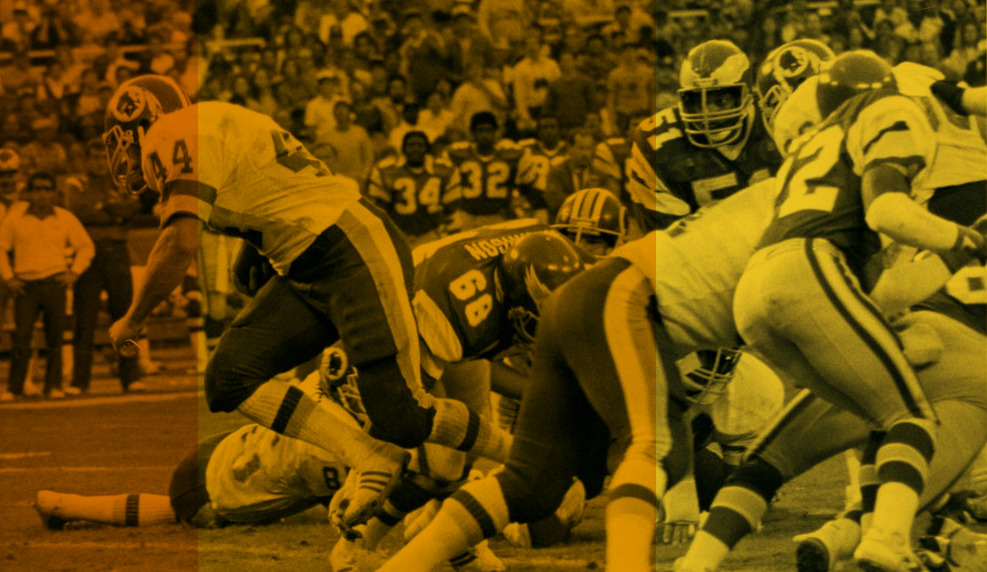Puny Pensions for Pre-1993 Players on the Table Again in NFL CBA Talks
By: Daniel Kaplan
Dennis McKnight doesn’t want to burden his family. So if the ex-NFL offensive guard for 11 years and current Canadian Football League coach gets very sick, he won’t fight death. The California resident doesn’t have enough money for medical insurance, and already coaches in chronic pain with an artificial hip and knee.
“If I find that I had cancer, well, I don’t have health insurance to pay for treatment; you know what I’ll just wait until I die because I am not going to bankrupt my family,” he said.
Earl Edwards, who retired from the NFL in 1979 after an 11-year career, said he is withdrawn and can’t work, a condition he blames on concussive hits, and his wife supports him. He worries they won’t have enough to pay off the mortgage.
Ed White retired after 17 years and now has a $550 a month pension that was artificially depressed in a deal that slashed his payments when he hit Social Security age, he said. He survives on selling art and his wife’s school teacher income, and past savings.
Lyle Blackwood played with a broken back in Super Bowl XIX, and took his pension early because he was told by his union that NFL players often did not live past 55.
And they consider themselves the lucky players of the so-called pre-1993 era, designated as such because the new collective bargaining agreement that year dramatically improved players’ pensions moving forward. They aren’t destitute and in need of handouts — yet — like many of their brethren.
“A lot of these guys that I’m very close to are really struggling right now and you know, relatively speaking a little bit more would make a huge difference for a lot of these guys,” said former Dallas Cowboys quarterback Danny White.
In 2011, the league and players agreed to split the cost of increasing pensions for the pre-’93 players, contributing $620 million to what is called the Legacy Fund benefit that is part of the 10-year CBA. The Legacy payments are designed to continue after the current CBA ends in March 2021. Many of the pre-’93 players contend even with Legacy, it is not enough, and this next go-around in labor talk is the last time available to fix the issue.
Lisa Marie Riggins, wife of the Hall of Fame running back John Riggins, tells the stories of one aging player who toils as a janitor and another Hall of Famer who lives in a trailer with rotting teeth (these two players, she said, were too proud to allow her to name them).
Riggins’ three-year-old nonprofit organization, Fairness for Athletes in Retirement (FAIR), recently sent to owners and the NFLPA a proposal to take 0.95 percent of the salary cap for a decade as a part of a new collective bargaining agreement, with an owner match, and raise pre-’93 pensions for players who played four or more years. Her plan amounts to $1.9 billion based on FAIR’s projections of rising salary caps through 2030.
“You look at this group, it is a very unique space,” she said. “I mean, they’re not solving brain cancer and they’re not out, you know, fighting in Syria, I’m not indicating that. But in their world, in their space, they were some pretty significant individuals that did a lot for this country in an entertainment way. And building one of the most successful sports corporations in the world. They were an integral, significant part of that.”
Many players took early pensions because they were convinced, in part by their own union’s advice, they would not live past 55, she said. Bob Stein, a former player and lawyer for many of the retirees, said the NFLPA convinced players like [Ed] White to take an early pension, and receive a little extra, in return for slashing the pension amount at Social Security age. White’s pension is at $550 a month now, and it’s only that high because he played so long. Some players reached Social Security age and saw pensions drop to $150 a month.
The 39-page report sent to the NFL, and a 42-page one to the NFLPA, cost $85,000, Riggins said, in part because of the painstaking process of sifting through every pre-’93 player and hiring actuaries. The cost was so expensive, she said, also because the NFLPA and NFL would not provide the information.
…
Five hundred pre-’93 players have died since 2012, leaving 3,400 of them receiving pensions of a few thousand dollars a month at best, FAIR’s report said. That is one of the morbid selling points of the new proposal: by the time 2030 comes around and the end of the 0.95 percent tithing, the grim reaper will have solved much of the issue and the owners and then current players won’t have to revisit it.
With that in mind, FAIR is reminding the owners and players that the game’s uber-violent roots have taken a toll, so they have a moral obligation to address.
“The past 10-15 years have seen great emphasis on making pro football much safer in many areas: helmet-to-helmet hits, defenseless players, contact/non contact practices, kickoff wedges, and more,” FAIR’s report said. “Medical care is far better. The NFL has become a vastly more safety-conscious workplace. Pre-1993 games were weekly street fights: headhunting, chop blocks, horsecollar tackles and vicious head slaps. Rock-hard AstroTurf separated shoulders and shredded knees. Concussions were not understood.”
Indeed, players interviewed for this story tell stories that today would spark congressional hearings.
…
The NFL CBA expires in March 2021, though the league would like to secure an extension before the end of this season. And one NFL pitch to the current players in this regard is an earlier CBA extension would mean pension relief sooner.
Read Daniel Kaplan’s full story at The Athletic.


